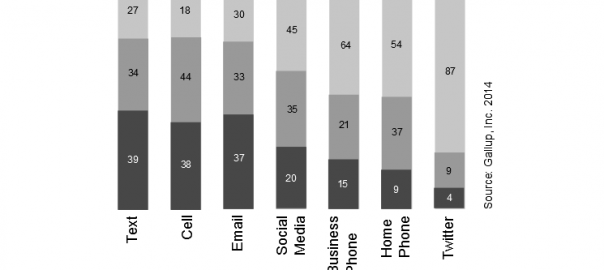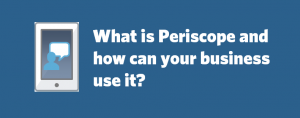Many in the research industry banged the mobile drum as if mobile data collection would replace online in only a few years. This mindset, like other delusions of grandeur, ignored the clear challenges ahead for such a victory. Mobile data collection certainly managed some progress in the space and according to the latest GRIT industry report published by Greenbook.org, it is producing some respectable numbers. However, it still has a long way to go; furthermore, it fell short of other outlandish claims like its potential to end email. The emergence of new research methods without question tears market share away from online data collection, but is that enough to say email is dying?
The tyrannosaurus and email belong to the same species according to many analyzing the impact of email in the age of mobile apps, omnichannel integration, and other competitive technology. Though other options certainly perform well, and possess growing user bases, email remains king with no signs of slowing down.
Users find email, as allegedly the most used application type, trustworthy, valuable, and comfortable in contrast to other options. It offers the versatility and ease of use other applications, even the most well-engineered, do not.
In the age of choice, with so many competing technologies and services, a stalwart like email endures attacks from all sides. Email stands in the way of new media organizations and application organizations that see an enemy rather than a resource to leverage, a view likely resulting from the dramatically different profit margins of email and SaaS. This article explores the state of email both as a channel and web application type, and its relationship with users.
The Birth of Email
The concept of mail, passing messages verbally or in written form, likely began ages ago. Documented evidence reveals Pharaohs utilized couriers to deliver documents throughout Egypt. Other regions eventually caught up to the infrastructure and theory of Egypt employing their own mail systems.
The United States’ mail system began in the late 1600s with personal mail delivered by associates and assistants. In this era, a governor established the first formal post system, between New York and Boston. 5 It took roughly over 200 years for the postal system of today to develop from poorly-constructed, individualized systems relying on various transportation methods. These cobbled together systems relied on odd combinations of coaches, horseback, steam ships, trains, and hot air balloons.
Military communication, in its never-ending quest for new and better technology, spawned a plethora of tools, however, the military nor its internet birthed email. Email began humbly in the early 60s as nothing more than shared access (i.e., time-sharing) to a system, much like the collaborative software used today. People placed messages in another user’s directory through the mainframe they shared and accessed with workstations.
When the military’s ARPANET grew, like other aspects of computer use, email experienced dramatic changes in use and technology. Email, a defining moment for ARPANET, arguably saved the project and gave us the internet.
Today, email remains the most important type of application on the internet. Some believe it transformed the internet from something critical only to certain users to something the average person wanted to use.
Trends
Business Email 2011 2012 2013 2014 2015 Average Daily Email 105 110 115 120 125 Average Received 72 75 78 81 84 Average Sent 33 35 37 39 41
Table 1: Corporate Emails Sent and Received Daily Per User 2012 to 2015 23
Daily Email Traffic 2013 2014 2015 Sent/Received Per Day 182.9 191.4 196.4 Growth 5.00% 3.00% Business Emails 100.5 108.8 116.2 Growth 8.00% 7.00%
Table 2: International Daily Email Traffic 2013 to 2015 22
The steady growth, and continued growth, of email coincides with penetration of communications technology and services. Email began with expensive computers only accessible to public organizations, businesses, and those of means; however, as the technology developed, prices fell.
The early 90s saw the internet opened to the general public as prices continued to drop, and distribution of product expanded. The internet reached substantial public penetration by the late 90s, and connection speeds grew. Mobile technology prices, as a result of Palm devices, plummeted, and found their way to the general market. Mobile devices and supporting wireless service too began to see prices dip, improved speeds, and more penetration.
The cultural response to the technology held just as much power as its progress and expansion. Though absolutely absurd, the average person was convinced (by marketing and their peers) to acquire a cell phone. This came after years of viewing the devices as practical only for critical professions (e.g., medicine and military). Mobile technology morphed into a status symbol and trend with entertainers singing about the latest devices. Individuals and organizations also promoted the idea that people without the devices were troglodytes. Despite trends and marketing, the technology did (and continues to) enhance quality of life such as supporting education, productivity, and socializing.
In this era with new connected devices continuing to emerge and support related technology, the presence of services like email only grows. Email clients for Apple mobile devices currently dominate the client market space.
A readership survey from Success magazine reveals in-person and email (40%) communication as the two most preferred forms.15 A study conducted by NewVoiceMedia found 19% of respondents considered email the most effective way of contacting businesses and solving problems.16 A MarketingSherpa study shows 72% prefer for this communication to occur via email; furthermore, email outperformed traditional media and new media. Email proved popular across almost every demographic.
An ExactTarget survey found email to be the favored channel for deal searching, sharing content from family and friends, and financial alerts.18 A recent syndicated research conducted by qSample.com explored workplace productivity tools, and more than 51% of those surveyed preferred email to in-person meetings, email besting all other forms of business communication.
The Big 3: Gmail, Yahoo, and MSN
Three free online email services currently dominate the space and public awareness: Gmail, Yahoo! mail, and MSN (an umbrella for Outlook, Hotmail, and Live mail) mail. Hotmail began as one of the first free webmail services, and shortly after launch, Microsoft acquired the service. Yahoo benefited tremendously from the dotcom era, and quickly acquired a promising company for its Rocketmail webmail service. Both companies enjoyed popularity and a high profile during their eras as fresh and appealing companies. At the time, Google remained an almost obscure metasearch engine.
Both email services generally satisfied users, but suffered from performance issues due to their simple HTML design. Google, one of the first large organizations to recognize its potential, developed a service using dynamic code now known as AJAX. Their design featured a robust service with function more like an application than a site.
Gmail boasts 900 million users as of May 2015 with MSN claiming over 400 million (as of January 2016), and Yahoo estimating 273 million (as of February 2014). Outlook’s support for over 100 languages and Gmail’s support for over 70 further extends their reach in existing and growing international markets. 26 Litmus, an email marketing testing and analytics application, analyzes and publishes email market share data. 11 Litmus data reveals Gmail holds 15% of the market while MSN holds 5% and Yahoo stands at 3%.
Users associate certain email addresses with professionalism, and consider email as essential as a phone number. A report from Visible Logic, Inc. reveals 70% of respondents believed non-domain-level email addresses made an individual appear unprofessional, “lazy,” and “cheap.” They ranked a branded email as most professional, with Gmail in second place.
The Future of Email
Email use, applications, and the needs it satisfies remain essentially the same as decades ago. Only its integration has experienced substantial change such as creating accounts, customer support, account management, and more.
Email serves a need not easily replaced because strong options (e.g., text, collaborative software, mobile apps, and social media) fail to pull users away.6 Many SaaS based research tools, like QuestionPro, collect hundred of thousand of surveys monthly, using email as a vehicle to invite users to participate in such surveys. These numbers continue to increase steadily year after year.
Of course, one cannot argue that the medium is causing some level of fatigue, among email recipients who are constantly exposed to a barrage of product offers, sales pitches, network invitations, etc. It will be up to email marketers to find a better way to sanitize and communicate their message. However, the argument that email is dying is as absurd today as it was 5 years ago when people like Facebook’s co-founder (Dustin Moskovitz) made that claim.
Download this infographic.
Digital & Social Articles on Business 2 Community(109)
Report Post







